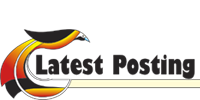In the competitive landscape of job interviews, standing out from the crowd requires more than just a polished resume. With recruitment agencies for Bahrain playing a pivotal role in connecting candidates with opportunities, the ability to articulate your experiences effectively can make all the difference The ability to articulate your experiences effectively can make all the difference. One proven method for answering behavioral questions with precision and impact is the STAR technique. In this blog post, we’ll explore what the STAR technique is, why it’s essential, and how you can use it to shine in your next interview.
What is the STAR Technique?
The STAR technique is an acronym that stands for Situation, Task, Action, and Result. It’s a structured approach to answering behavioral interview questions by providing specific examples from your past experiences. By organizing your responses using this framework, you can deliver clear and compelling narratives that showcase your skills and accomplishments.
Why is the STAR Technique Important?
Interviewers use behavioral questions to assess how candidates handle real-life situations, analyze problems, and demonstrate key competencies. The STAR technique helps you respond to these questions in a way that highlights your abilities and achievements, making you a more attractive candidate. It also ensures that your answers are concise, relevant, and easy for the interviewer to follow.
Breaking Down the STAR Technique
1. Situation:
Start by setting the stage for your story. Describe the context and provide necessary details about the situation you faced. Be sure to keep it concise and focus on the most relevant aspects of the scenario.
Example: “In my previous role as a project manager, we were tasked with launching a new product within a tight deadline.”
2. Task:
Clearly state your responsibility or role in the given situation. What were you tasked with accomplishing? This helps the interviewer understand your specific contributions to the task at hand.
Example: “My task was to coordinate the efforts of the cross-functional team, ensuring that each department met its deadlines and that the project stayed on track.”
3. Action:
Detail the actions you took to address the situation or complete the task. Emphasize the specific steps you took, highlighting your skills and decision-making process.
Example: “I implemented a project management tool to streamline communication, organized weekly team meetings to assess progress, and identified potential bottlenecks early on to proactively address them.”
4. Result:
Conclude your story by sharing the outcomes of your actions. What were the positive results of your efforts, and how did they impact the overall situation?
Example: “As a result, we successfully launched the product ahead of schedule, leading to a 20% increase in sales within the first quarter.”

Tips for Using the STAR Technique Effectively
Choose Relevant Examples:
Select examples that directly relate to the skills and qualities required for the position you’re interviewing for.
Quantify Results:
Whenever possible, include specific metrics or data to quantify the impact of your actions. This adds credibility to your achievements.
Practice, but Be Flexible:
Familiarize yourself with the STAR technique and practice using it with different scenarios from your past. However, remain adaptable to tailor your responses based on the interviewer’s questions.
Maintain a Positive Tone:
Even when discussing challenges or setbacks, focus on the positive aspects of your actions and the ultimate outcomes.
Overcoming Common Challenges with the STAR Technique
While the STAR technique is a powerful tool for acing interviews, many candidates face challenges in its application. Let’s delve into common stumbling blocks and explore strategies to overcome them, ensuring you confidently navigate any behavioral question thrown your way.
Conclusion
Incorporating the STAR technique into your interview preparation can significantly enhance your ability to communicate effectively and leave a lasting impression on potential employers. By structuring your responses with clarity and highlighting your skills through real-life examples, you’ll be well on your way to mastering the art of interviews. Remember, it’s not just about what you’ve done but how well you can articulate and demonstrate your unique contributions to the workplace.





